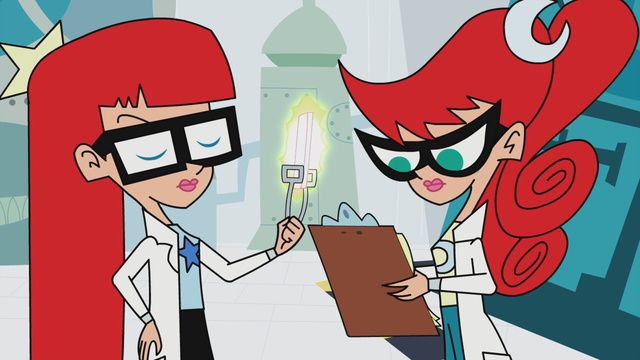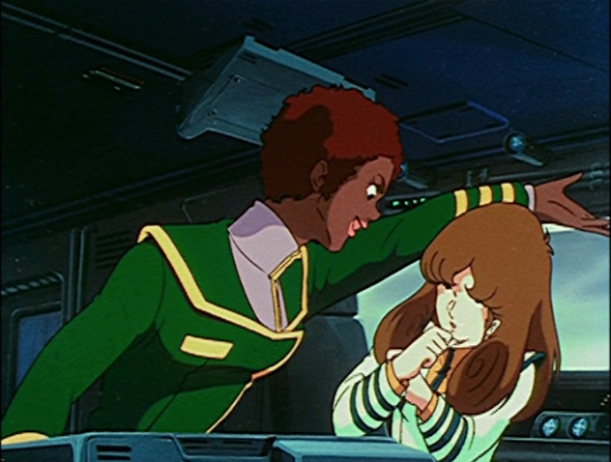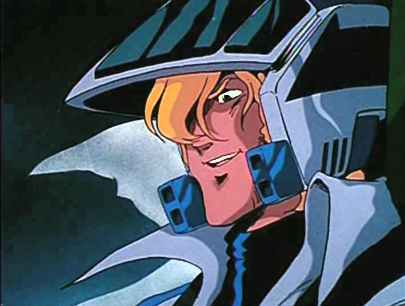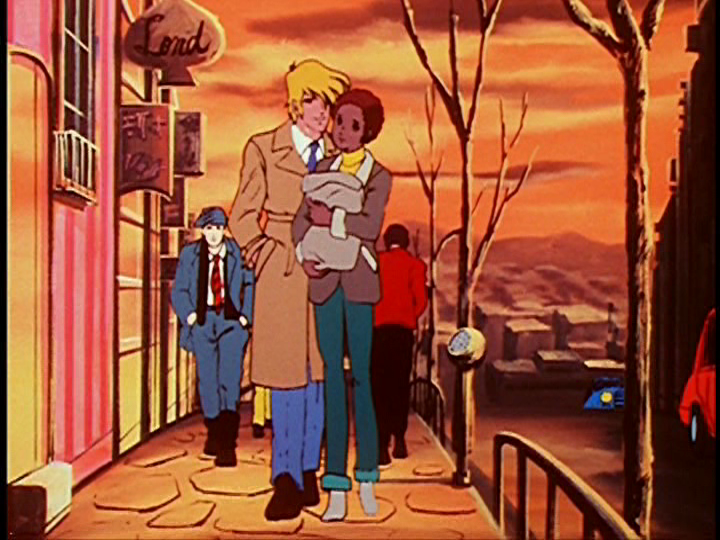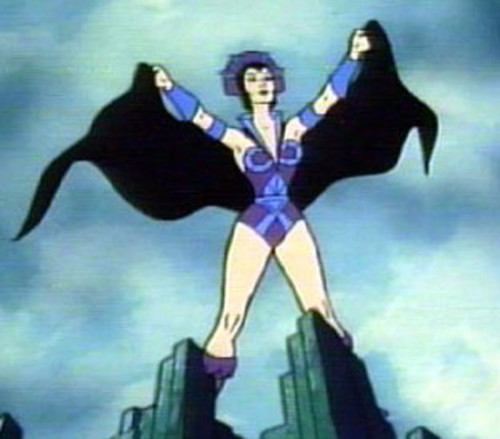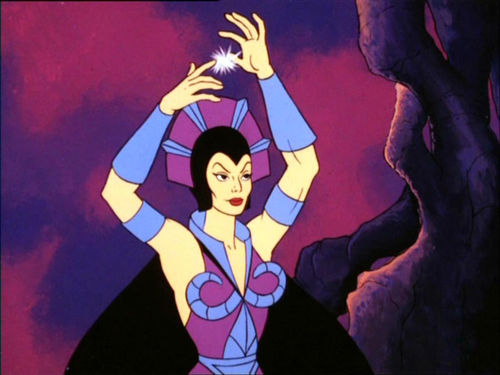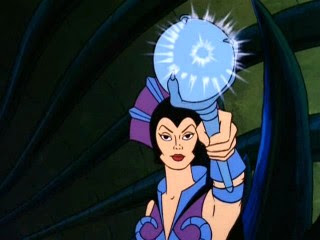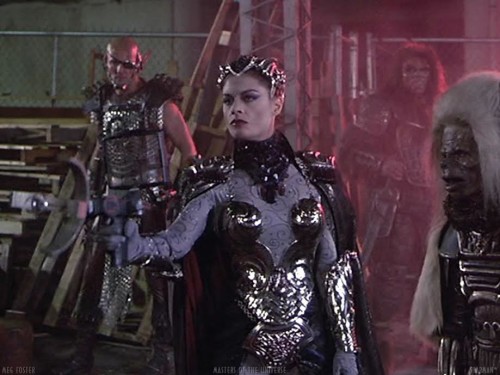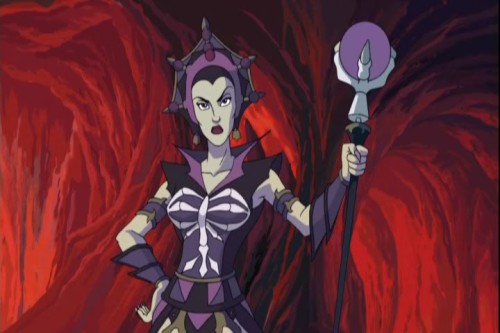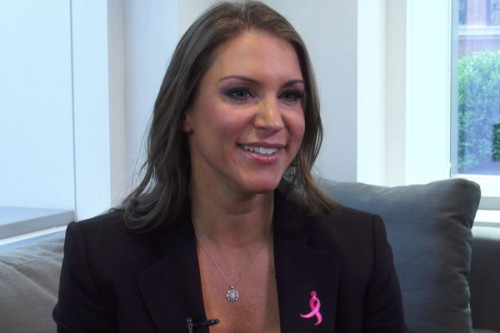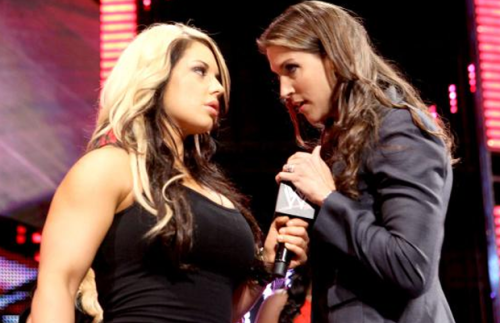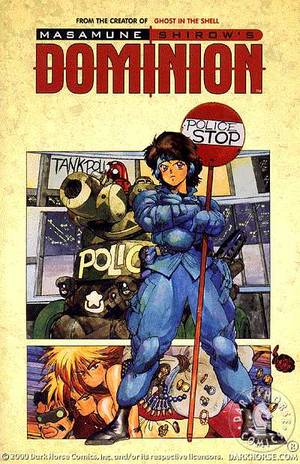
This guest post written by Robert V. Aldrich appears as part of our theme week on Women Scientists.
No one’s going to blame you if you haven’t heard of Johnny Test.
It was a quiet little show that ran from 2005 to 2014, first on The CW (Kids’ WB at the time) and thereafter on Cartoon Network. There wasn’t a whole lot to it as a show, to be honest. It was pretty casual fare about a boy and his talking dog, with simple art and generic animation. The voice acting was pretty decent but nothing to write home about. Each episode was usually a very simple concept (often revolving around school, chores, and similar mundane events) that got milked for all it was worth. The series’ episodes had a few decent jokes to make you smirk, a lot of lowest-common-denominator giggles, and one or two gags that went over the kids’ heads that only mom or dad got. It was a perfectly decent show, perhaps even good at times, but never anything particularly stellar.
In another time and place, Johnny Test might have been a bigger deal, but like its ancestors from the late-80s, the series suffered from being an adequate cartoon just after a major epoch of great cartoons (with the 2008 conclusion of Avatar: The Last Airbender and the cancellation of Toonami) as well as being overshadowed by a few stellar standouts (like Ben 10 and Transformers: Animated). As such, only its very core target audience even knew it existed. Which is a shame because while the show as a whole was run-of-the-mill, it quietly had two of the most brilliantly realized female characters in recent cartoon history: Mary and Susan Test.

While the TV series Johnny Test was very clearly aimed right at the ‘boy’ demographic, with the titular character and his talking dog Dukey (…shudder…) being the centerpiece of most episodes, the two pivotal characters were Johnny’s older twin sisters. Whereas Johnny was an average, no-brand kid who was equal parts jock, geek, and lay-about (IE your generic all-American pre-tween), Mary and Susan Test are ambitious, intelligent, and fully-actualized. Exaggeratedly brilliant scientists, it’s the twin girls who put into motion most events of the series. The two red-haired teen girls are constantly working on scientific experiments that push the boundaries of human comprehension, ability, and rend the very laws of nature. Basically, think Dexter from Dexter’s Lab, only with actual manners, social graces, and no bizarre accent.
Mary, the eldest of the twins and visualized with curly hair and baggy pants, is an open-minded sort of scientist, willing to engage with most any theory. She’s slightly more out-going of the two girls and focuses mostly on their collective work. She seems to be the more mature of the two and the most well-adjusted of the three Test children.
Susan is Mary’s counterpart (if differences that subtle can be called such). The younger of the two, Susan has straight hair and typically wears a skirt. She’s a little more hard-nosed when it comes to science and interpretation, and is a little more curt. She evidences a quicker temper than her sister, and has also garnered the attention of an unwanted paramour in the form of Eugene ‘Bling-Bling Boy’ Hamilton.
Both Mary and Susan are brilliant scientists, whose work is courted by the U.S. government (who seem synonymous with the military, though they’re frequently played for comic relief) and other institutions, even while they attend school at Porkbelly Technical Institute (which seems to be a generic higher-ed establishment and made unclear if it’s a high school or a college).
Mary and Susan are not the first female science wonks in cartoon history. Prior to them, cartoon-watchers had Gadget Hackwrench from Rescue Rangers and Sandy Cheeks on Spongebob Squarepants (yep, technically the squirrel in a diving suit is a scientist). Go back any farther and you could debatably include Penny from Inspector Gadget, but at about that point, the already paltry list begins to thin out completely. Sure, some shows had the occasional one-off or even recurring character as a female scientist (Transformers had Carly, Spike’s girlfriend who seemed a little too enamored with the alien robots), but by and large, the media was woefully lacking in such representation. This necessitated audiences look to live-action entertainment for any semblance of female characters into science, math, and the like. But live-action stuff’s like, for adults and who wants to watch that?
Even more remarkable is that while female science characters are in short supply, in even shorter supply – so much so as to border on unheard of – are female scientists who are still GIRLS. In the annals of cartoon history, one would be hard-pressed to find any other characters so prominent and also so well-rounded. While Mary and Susan’s cartoon predecessors were often more scientist than girl, the Test Twins are still very much regular teen girls. They like to get gussied up in dresses, go to the pool, and go dancing. They like makeup and many of the usual trappings associated with femininity. They just also really, really love science.
This is best evidenced by both girls having an unrequited interest in Gil Nexdor (get it?), the hunky airhead that lives down the street. Both girls pine for Gil’s easily-distracted attention, but are exceptionally clueless as to how to achieve it or hold it. For most of the show, Gil seems largely oblivious to the Test Twins’ very existence, an interesting reversal on the usual trope. It’s doubly interesting because of how it is similar to Susan’s struggles with Bling-Bling Boy and his constant, unwanted (and at times, toxic) attention.
Most every episode of Johnny Test involves the girls and their intelligence. Either an invention of theirs kicks off the episode’s action, or one is needed to save the day. Episodes vary from the run-of-the-mill charm-of-life episodes involving the usual kids’ matters (lazy afternoon, not wanting to do homework, sibling rivalry, etc.) to hyper-exaggerated inanity (alien invasions, feuds with other super-geniuses). Mary and Susan sometimes struggle with one another, as sisters are wont to do, but always end up reconciling. Likewise, their attitudes towards Johnny vary from episode to episode, depending on how much trouble he’s getting them into or how much they want him to test a new invention, but they always drop everything to help him.
The Test Twins really are quite remarkable as characters. As progressive as cartoons can be, there remains a colossal dearth of science-minded female characters, especially ones who embrace femininity. Were we to guess based off the likes of their peers and predecessors like Penny or Gadget, we might get the impression that once a woman puts on a lab coat or a stethoscope, she ceases to be a woman or a girl. Once she commits to STEM interests, she quits being interested in dresses, dances, or swooning after crushes. Mary and Susan Test challenge this quietly but directly.
For girls tuning in to watch this show, they found two prominent and visible characters who appear in nearly every single episode and always contribute meaningfully, if not outright save the day. Moreover, they do it not with beauty or social graces or even physical might, but with their intellect. These girls are the force in the show because of their smarts. Name any other cartoon with any other female character (much less two!) that can say the same. Don’t worry, I’ll wait.
Moreover, these two girls are not the centerpieces of the show. While they’re certainly not supporting characters, they’re not quite tritagonists with Johnny either. Mary and Susan occupy some unique territory where, depending on the episode, they find themselves as anything from partner-in-crime to background character to even deus ex machina. At first glance, this might seem a bit to undermine their importance, but consider instead that the target audience of this show is likely to be boys (because heaven forbid a show appeal to both, but that’s a discussion for another matter). By having these two super-science girls in the background of the show helps normalize the notion of girls who are smart, ambitious and love science. If this show were a little boy’s favorite TV show, it would be very likely that he would be completely accepting of girls at school being into biology, math, and the like. After all, why wouldn’t they be?
The world of entertainment has not been kind to women and girls who are interested in science, technology, engineering, and math. Often these characters are written quickly out of shows, turned into one-off joke characters, or relegated to quiet support. When they are featured in any way, they are nerdy outcasts who are scientists not just first, but almost exclusively. If a female character is into STEM matters, it’s as if they must sacrifice their femininity.
Mary and Susan casually dismiss all of that as the garbage that it is. They’re girls, fully realized and healthy in every way, who love science and lose themselves in their pursuits. No struggle exists to reconcile their intellects with their lives as girls. They are the perfect role-models of the aspiring scientist who also wants to wear cute clothes and go to the prom. On a show that otherwise was solid but quite forgettable, these girls stood out as contributing wonderfully to the tapestry of rich female characters cartoons have offered.
Not too bad for a cartoon with a talking dog named Dukey.
Robert V. Aldrich is a writer and novelist, living in Raleigh, North Carolina (and plans to vote against Pat McCrory as soon as November gets here). He’s the author of numerous books including Samifel and Rhest for the Wicked, as well as a contributing writer for multiple websites. You can find more of his work at TeachTheSky.com and he can be found on Facebook and Twitter. When not writing B-rate sci-fi or smarty-pants evaluations of kids’ shows, he is working for the health department, teaching martial arts, or losing arguments to his cats.
